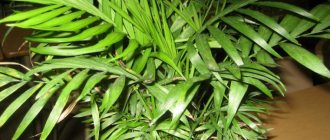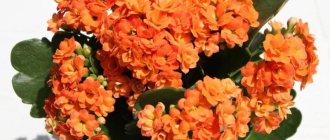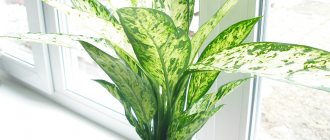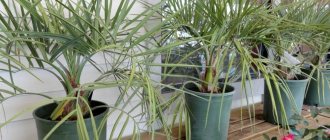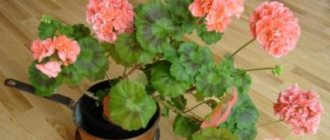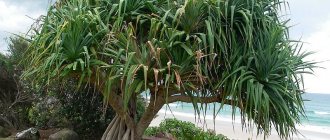If you want to create a smaller version of the jungle in your home, an indoor palm tree is a great option, and preferably more than one. She is unpretentious, grows happily and happily, and does not require much attention. But make no mistake – plants still require care. Which? Below we have listed the basic rules for “keeping” a palm tree. Read and put into practice.
The soil
First of all, you should choose the right soil, because otherwise all subsequent efforts will be pointless. Suitable soil is a loose, porous mixture. A combination of peat moss and perlite (or vermiculite) or shredded bark is suitable. You can simply purchase soil specifically for growing palm trees; it should contain the necessary components. A peat mixture with vermiculite retains moisture well. Palm trees do not really like to be replanted (they can grow in one pot for more than 3 years), so be sure to think about filling the pot.
Features of culture
There are about 130 species in the genus of woody flowering plants - Chamaedorea, and only a small part is cultivated as decorative foliage plants.
In nature, the low-growing palm tree grows in tropical rainforests, in the foothills under the crowns of tall trees; at home, it will grow from 1.5 to 2 m in height, with a crown diameter of 60-70 cm. There are dwarf varieties, the height of which does not exceed half a meter. In appearance, it can be a bush with several erect stems, a tree with a thin trunk, or less often a liana. In several varieties, aerial roots grow in the lower part of the trunk with age.
The word "chamaedorea" consists of the words "chamai" + "dorea", which means "low (dwarf)" + "gift". Due to the similarity of the stems to bamboo shoots, Hamedorea is sometimes called the bamboo palm.
The leaves are long (about 60 cm), or entire, or consist of narrow (2.5-3 cm) alternate segments 10-15 cm long. The surface of the leaf blade is glossy, with clearly visible longitudinal veins; in some varieties the upper part is forked.
The plant is dioecious, many male flowers are produced, they are small, bright yellow, red, collected in an inflorescence similar to a spike or panicle. The female flower is single on a peduncle and can be red, yellow, or orange. After flowering, a fruit-berry is formed. It begins to bloom at 3-4 years of age; the flowering period is not tied to the season.
Varieties of chamedorea: Ch. Ernesti-Augusti, Ch. elegans, Ch. concolor, Ch. elatior, Ch. metallica ).
Ch. Ernesti-Augusti
Ch. elegans
Ch. metallica
Watering
Palm trees are not too picky about the water regime, but it is still better to monitor their watering. This way they will grow better and stay fresh. It is recommended to water the plant about once a week to keep the soil moderately moist at all times. The soil should not be allowed to become very dry, especially during the summer months (this is their active growing season). In winter, you can take long breaks in distributing water. You can spray the plant a couple of times a month to remove dust from the leaves and refresh them.
In general, it is better if a home palm tree is underwatered than flooded. Excessive humidity is fatal to these plants. If you are afraid of making mistakes with watering, you can buy a special device for measuring soil moisture. And also before planting, for the same purposes, be sure to place a layer of drainage on the bottom of the pot (this can be karamzit, pebbles, etc.).
Palm Propagation Instructions
How to care for clerodendrum at home
The method of propagation of a palm tree depends on its type. Flowering species that produce seeds can be germinated naturally - from seeds and seeds. Non-flowering varieties reproduce vegetatively.
Vegetative propagation
Many flower growers want to know how a palm tree reproduces vegetatively, if it most often has only one trunk. Even such a plant can be propagated vegetatively. To do this, it is enough to cut off the upper part of the shoot, separating the bottom of the resulting cutting from the leaves. Place the shoot in a pot with fertile substrate, moisten and keep at room temperature. To speed up the rooting process, you can create a greenhouse by covering the plant with a glass jar or film. After the roots appear, the greenhouse is disassembled.
Growing from seeds or seeds
Growing a new palm tree from seeds is easy. To do this, you don’t have to wait for your neighbor’s adult plant to bloom - seeds and seeds are sold in flower shops. You can propagate a palm tree only from fresh planting material, so you should definitely pay attention to what year of packaging is indicated - if more than two years have passed, it is better to discard such a set.
Seed ripening
How to grow a palm tree from seeds, step-by-step instructions:
- Carefully cut into the dense shell of the seed or seed without damaging the kernel.
- Place the seed material in warm water.
- Wait for the seeds to swell; to increase the percentage of germination, change the water once a day.
- Deepen the swollen seed into a fertile substrate, water it, and cover it with film.
- After the sprouts appear, the film can be removed.
Attention! Palm seeds germinate for quite a long time; there is no need to throw away the seed if it has not sprouted even in a month.
Light and humidity
Palm trees have no special requirements for light. It would be more correct to say that they do not tolerate direct sun, so it is better to place your plant in a shady place in the room. For the owner, this condition is easier to fulfill than to constantly worry about proper lighting for his “pet”. But the plant will not survive in complete darkness either, so create neutral light for the palm tree.
You also need to pay attention to the humidity in the room. The room should not be too dry; avoid using air conditioners. In winter, keep the palm tree away from radiators, fireplaces and other heating devices.
What types of indoor palm trees are there?
An indoor palm tree is expensive today, so purchasing it remains only a dream for many lovers of ornamental vegetation. Adult specimens of the crop grown in a nursery will decorate any home. However, you should remember that buying a mature plant is very risky. Changing growing conditions is detrimental to the crop and often provokes the development of serious diseases or death of the palm tree.
Therefore, when choosing indoor palm plants in the nursery, give preference to small young shoots that have only a minimal crown of leaves. It is these specimens that more easily adapt to other cultivation conditions and care techniques. Do not be alarmed if there is no green mass on the stem of the crop. It builds up after some time.
We recommend viewing: Lavatera - description, care, planting, photos
The leaves of the palm tree are its most spectacular part. They are characterized by a spectacular shape and appearance that immediately catches the eye. The shape of the foliage is determined by the crop variety. The leaf plates can be straight, narrowed, or even in the form of a semicircle. It is impossible to cut leaf blades from a palm tree, as this may cause the crop to completely die.
Have you not yet decided which type of palm tree to choose for your apartment or house? We bring to your attention varieties of ornamental plants that are in high demand in the floriculture community.
Fertilizer
Fertilize your palm tree every one and a half to two months from early spring to late fall to ensure the plant receives the optimal amount of nutrients during its growth period. You can buy a special fertilizer for palm trees and add it to the soil.
Keep in mind when choosing a fertilizer that domestic palm trees are extremely sensitive to chemical fertilizers. Using them will do more harm than good. It’s better to buy organic mixtures, or don’t feed them at all.
How to feed a palm tree at home
Soil saturated with nutrients is one of the most important components ensuring the successful development of a plant. The palm tree prefers clay-turf or humus-leaf soil with a small addition of sand and charcoal.
In a specialized store you can purchase ready-made fertilizers from the following list:
- "Uniflor-growth";
- "Ideal";
- "Tsniflor-micro";
- “Giant” and others with a similar impact.
Feeding is applied from April to October. In the remaining months, the plant is dormant and does not require the addition of nutrients to the soil. It is also necessary to refrain from fertilizing in the first few months after transplantation.
Pests
Spider mites are the most common pests of indoor palm trees. To scare them away, you need to maintain a high level of air humidity at the location of the plant.
If you find any damage to the leaves of the plant, take immediate action. Instead of chemical pesticides for houseplant pests, use neem oil. Mix it with water and spray it on the palm tree - works great.
Description of the plant
The home palm tree is associated with serene relaxation and warmth. The genus of palm trees has more than 3,000 varieties. In the wild, the palm grows up to 10 meters or more in height. In a temperate climate, the plant does not survive in open ground, so they are grown indoors. Decorative culture is unpretentious.
There are many types of palm trees to grow at home. Varieties differ in shape and growth rate. The leaves can be in the shape of an umbrella, fan, or fern. The ground part is lush and voluminous. According to the shape of the leaf blades, palm trees are divided into fan and pinnate.
The latter type is distinguished by the parallel arrangement of leaves, which are attached to the central petiole. Fan palms are distinguished by the fact that the leaves are attached to the petiole at one point. The trunk of a palm tree can be single or branched. Based on this characteristic, plants are divided into shrubs and single-stemmed ones.
At home, palm trees can gradually change.
Landing
First you need to prepare the right soil. Palm "Lady" prefers soil that includes:
- turf soil;
- compost;
- peat;
- sand.
Everything is mixed in equal proportions and placed in a pot. It must be selected according to the size of your plant, otherwise the palm tree will wither. Also, the pot should be not just large, but wide. If a transplant is required, then the transshipment method is used. If your “Rapis” is an adult and the pot is of a suitable size, then for preventive purposes it is allowed to replace the top layer of soil.
Benefits and harms
Knowing about the beneficial properties of this plant, traditional healers have been using it for centuries. All its parts are medicinal - foliage, flowers, juice, stems and even roots. Euphorbia is known as a cure for many diseases.
All varieties of milkweed are toxic. Both the stems and foliage of the plant contain a whitish milky sap, one of the components of which is a highly toxic substance - euphorbine. Therefore, it is necessary to replant and propagate plants of this species with extreme caution.
Important! Experienced gardeners recommend wearing gloves before pruning a plant. A drop of milkweed juice that gets on the skin of a person or animal can severely burn it. If the juice gets into the eyes, it can cause short-term, and in some cases, lifelong blindness.
Poisoning with milkweed juice is diagnosed by the following symptoms:
- fainting and dizziness;
- nausea;
- heart valve dysfunction;
- paralysis.
Use in folk medicine
The benefits and harms of this plant in the apartment are constantly being disputed. It is known that folk healers see great help for human health in the milky sap of the plant. This whitish and extremely dangerous substance, as it turned out, has a whole bunch of medicinal properties. Milkweed juice is considered an excellent diaphoretic, laxative, and anti-inflammatory agent.
In folk medicine, the plant is known as a medicine for healing slow-healing wounds, heartburn, stomach and kidney diseases, cystitis, hemorrhoids and many other diseases.
Modern pharmacists use all parts of the plant to make medicines, and people who self-medicate prepare alcoholic tinctures and decoctions from milkweed.
However, according to experts, spurge is not a plant with which you can treat yourself. This can cause irreparable harm to your own health.
Medicines made from milkweed are contraindicated for women during pregnancy and lactation, as well as for children. The plant should not be used as a medicine for heart patients, hypertensive patients and people suffering from pulmonary diseases.
Correction of watering for palm trees for the winter
Without exception, all palm trees require a slow reduction in watering in the fall. The correct period of adaptation to winter humidity conditions is the basis for maintaining attractive leaves, because less stress means less risk.
Watering is reduced depending on the rate of soil drying and conditions:
- for palm trees that winter in warm conditions, they continue to check the drying of the soil, drying the substrate only a few centimeters more;
- for palm trees that winter in slightly cool conditions, watering is reduced, drying the soil several times more - up to a third or half;
- For palm trees in the cold, watering is reduced to the minimum necessary to preserve the roots and greenery.
In this case, it is worth following the recommendations for each individual type. Overwatering is extremely dangerous for any palm tree.
Watering with warm water is the most important condition and measure to prevent many problems in the development of palm trees. And you shouldn’t forget about it in winter, but only if by “warm” you mean water whose temperature is several degrees higher than the air temperature.
For all palm trees that are thermophilic so much that they prefer wintering at 18 degrees and above, it is better to leave the water temperature at the usual level of 30 degrees even in the depths of winter. For other types, they are guided by specific conditions.
In winter, regardless of the temperature of the palm trees, after watering, the water from the trays must be drained immediately, without even waiting the standard 5 minutes. If there are signs that the lower part of the substrate still remains waterlogged in palm trees, you can replace the usual tray with a container filled with moisture-absorbing materials (perlite, fine expanded clay and even sand).
Partially immersing pots in this base can help distribute moisture more efficiently and prevent dampness in the lower third of the substrate in the containers. The same technique can be used for accidental overwatering in winter, insufficient drainage holes and compacted soil, especially when kept at temperatures below 12 degrees Celsius.
Leaf problems - identifying the cause and eliminating them
Cycas flower - how to care for a sago palm
The decorative value of the palm tree lies in its green, rich foliage, which pleases the eye throughout the year. For this reason, when the greenery begins to lose its beautiful appearance, the owner involuntarily wonders why the leaves of the palm tree turn yellow.
Faded leaves are not always a sign of disease
There are several answers to this question. First of all, yellowing of foliage may be a natural process that has nothing to do with disease or improper care. It's just time for the leaves to wither and fall off because their life has come to an end. This is fine. To preserve decorativeness in this case, the yellowing parts are cut off.
Yellowing and drying of leaf tips
When a palm tree shows massive yellowing of leaves at the ends, it is necessary to pay special attention to caring for the plant. Most likely, the reason why the foliage begins to dry is due to improper care or inappropriate conditions.
Important! A common mistake newbies make is overwatering. Do not over-water a new plant after purchasing it.
Drafts are another reason why the tips begin to turn yellow and dry out. In this case, you need to transplant the palm tree to another place or eliminate the cause of drafts. However, ventilation is necessary. Stale and dry air also causes foliage to turn yellow.
If there is no natural humidifier, spray from a spray bottle. For the procedure, take soft, settled water at room temperature. Once every 7 days it is recommended to “bathe” the palm tree, cleaning the leaves from dust deposits.
White coating on leaves
A common cause of white bloom on leaves is watering and spraying with hard tap water. As a result, all moisture evaporates, leaving residues of salts and lime on the green mass. This coating clogs the pores and prevents the leaves from breathing fully. This leads to loss of decorativeness. The general condition of the plant becomes worse because it needs oxygen for development and health.
To avoid the appearance of plaque, you need to select a container for settling water from the water supply and fill it with water for irrigation in advance. After a few days, the impurities will settle to the bottom and you can safely use this water for irrigation and spraying.
White coating on leaves
Another reason is fungal infection. Favorable conditions for its development are excess water, dampness, and coolness. For this reason, spraying is not carried out between seasons. When a fungal infection has already occurred, the affected plants are treated with fungicides, and the infected leaves are removed.
Fresh air, but without drafts
In winter, drafts are very dangerous for all palm trees without exception. Moreover, all palm trees, regardless of origin, require regular ventilation and access to fresh air in winter and do not tolerate stagnation.
Free air circulation is no less important during a cool winter than during a warm one. Increased attention should be paid to protecting plants by covering palm trees from cold air currents, moving them or taking them to other rooms. Any sudden changes in temperature and cold drafts will affect the condition of the plants.
If it is possible to remove palm trees from the premises, it is better to use it, returning the plants back when the temperature stabilizes.
Growing conditions
In its natural environment, a low-growing palm tree is in partial shade from tall plants, so at home it needs to choose a place with diffused light, where there is no direct sun. Windows in the western and eastern directions are suitable; on the southern window it will be hot, the leaves will begin to turn yellow and dry in the sun. If there is no other place, you can put it near the window on a stand. In order for the crown to form evenly, the pot must be rotated periodically.
Temperature
Palm trees are tropical plants, so at low temperatures growth slows down or stops completely, the leaves begin to wither and dry out. The minimum temperature that chamedorea can withstand is +12 °C. In summer, the air temperature in the room should be within 27 °C, in winter - from 16 to 22 °C.
The soil in the tropics warms up well, and its temperature is almost the same as the air, and in winter it cools on the windowsill, so the pot should be placed on a heat-saving material, for example, polystyrene foam, and drafts should not be allowed when ventilating.
Sleeping area for adults
The main function of green spaces in the bedroom is to calm the excited nervous system and promote proper rest. This will cope with:
- Sansevieria three-lane - releases oxygen at night, purifies the air of toxins and improves sleep.
- Moses' Cradle - absorbs household and industrial toxins: acetone, ammonia and benzene.
- Phalaenopsis is a plant with beautiful flowers that produces large amounts of oxygen.
Kitchen
The room where food is prepared often serves as a dining room - a place where the whole family gathers for a meal. Green spaces in its interior turn this place into a recreation area where you can relax. The kitchen often contains:
- Aloe - this unpretentious flower feels good among edible odors and helps purify the air from benzene found in detergents and formaldehyde released from varnished furniture surfaces and floor coverings.
- Marsdenia blooms profusely - with good care, it pleases household members with white flowers all year round, lifting their spirits.
- African violet is very similar to a bouquet in a pot and perfectly decorates the interior. Its worthy place in the kitchen is the windowsill, where there is a lot of light, but no direct sunlight. This flower has the property of repelling ants.
People have long been convinced that green spaces in the home improve their mood and fill it with positive emotions and energy. They can be placed in any corner of the house and create the right conditions to enjoy flowers and greenery.
Found a violation? Report content
Types of date palms
The origin of the date palm is uncertain today. It was mentioned by the ancient Phoenicians, Greeks, Jews, and Hindus. She was well known in Egypt and the Middle East. Daughters were named after palm trees in different languages. It was believed that this would bring beauty to the baby, many children and good luck in life.
When this plant appeared on earth is also a mystery. Scientists have proven that people became acquainted with this palm tree and its delicious fruits back in the Neolithic era. It has become the main source of nutrition for millions of people. Today there are 17 species of palm trees native to Africa and Eurasia. For growing at home, we recommend 3 suitable species.
Recurved date palm (phoenix reclinata)
This tree has several trunks with a diameter of 10-17 cm and looks like a bush. It reaches a height of 8 meters. At home it is much lower. The leaves have a spreading shape and look like the feathers of a fairytale bird. They are covered with needle-like growths - thorns. Date tree phoenix reclinata or crooked date palm blooms beautifully in nature. Inflorescences appear in the axils of the leaves. The palm tree is planted in greenhouses and large premises, as it grows well at home, but requires a lot of space.
Robelen date palm (phoenix roebelenii o brien)
Robelena is the smallest option, ideal for a room. The palm reaches a height of 2 meters. May have one or more trunks. Densely located on the rachis are narrow, soft, dark green leaves 12-20 cm long. A date of this type will definitely fall in love with your room if it is warm and relatively humid (at least 50%).
Forest date palm (phoenix sylvestris)
A plant with a wide single trunk in nature reaches 12 meters in height. The leaves have an original bluish-smoky color and a carved shape, consisting of several groups of elongated lobes. About 200 of them can grow on a palm tree. This makes its crown thick and voluminous. The flowers of the forest palm are white and directed upward. Loves dry climates and is unpretentious to abundant daylight.
Euphorbia white-veined: reproduction features
The plant automatically reproduces using its "seed cannons". The spherical black-brown seeds have a diameter of about one millimeter and are scattered several meters with enormous force. They can often be found in remote places on the windowsill. They often end up in neighboring flower pots or directly in their own.
Whenever the seeds hit the ground, they begin to germinate and grow very quickly without human intervention. At temperatures between 20 and 25 °C, the seeds germinate in about 3 weeks.
Once the new plant reaches a height of at least five centimeters, you can transplant it into its own pot. White-veined milkweed rarely remains alone for long.
